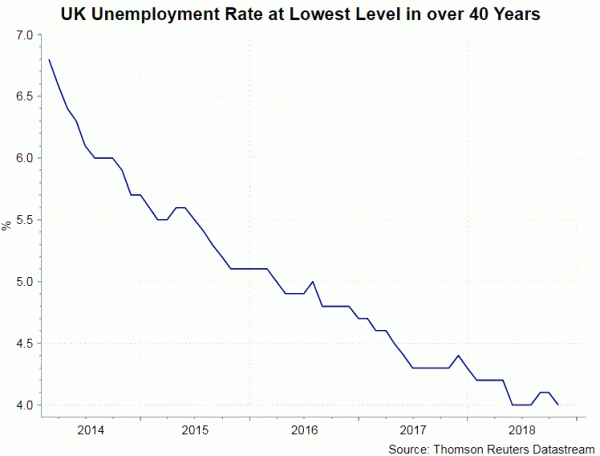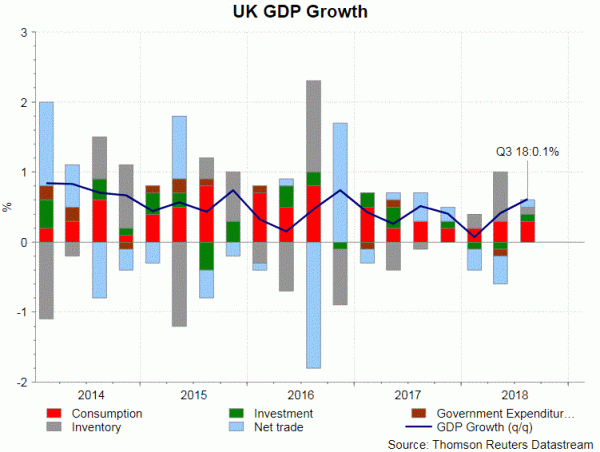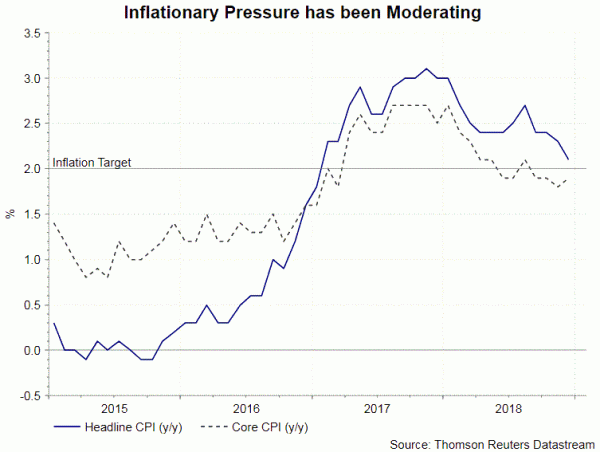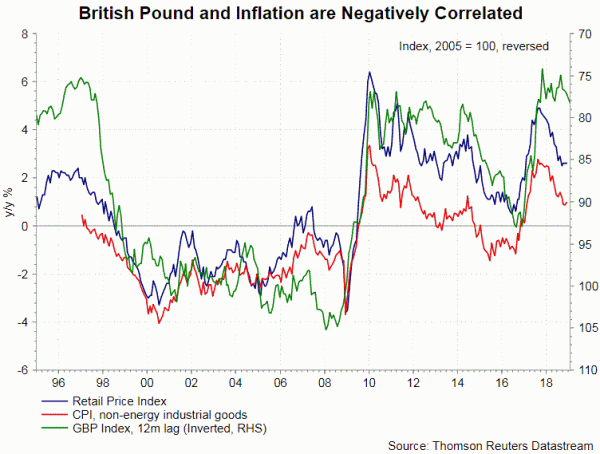Again, we expect BOE to vote unanimously to keep the Bank rate unchanged at 0.75%, as well as to leave the asset purchase program at 435B pound, at the February meeting. While the focus of the meeting remains on Brexit uncertainty, economic assessment and forward guidance, the dynamics of the political and economic situation signals that the members would turn more dovish. We do not expect a more cautious BOE to send GBP much lower, as the market has already moved backward the expectations on the next rate hike. Viewing the MPC as torn between Brexit uncertainty and resilient labor market, the market has priced in only 50% chance for a rate hike by end -2019 and not fully priced in a rate hike until end 2020.
Brexit Uncertainty
After rejecting PM Theresa May’s original proposal on the Withdrawal Agreement on January 15, the parliament voted on several amendments of the deal last week. The Brady amendment, calling for replacing the Irish backstop solution by “alternative arrangement”, was passed by a vote of 317 to 301. Meanwhile, Spelman’s non-binding amendment to reject the UK leaving the EU without a deal was also passed. On the other hand, the Cooper amendment, proposing to extend the official Brexit deadline to December 31, in order to rule out a no-deal Brexit, was defeated. As May heads to Brussels to negotiate changes with the EU, the latter has indicated that no further change would be granted.
The uncertainty of the Brexit outlook remains and the possibility of a no-deal Brexit is not eliminated. In our previous report, we have lain down a number of possible outcomes, including extension of Article 50, second referendum, early election and no- deal Brexit. It remains uncertain to the BOE, as well as the parliament, which scenario stands out. At the February meeting, the BOE should warn of the uncertainty and the possibility of an extension of Article 50. If the official Brexit date is postponed, the BOE should delay its rate hike accordingly, given all it assumptions on the economic outlook and monetary policy are based on smooth Brexit.
Economic Developments
We expect the members to revise lower the GDP growth and inflation forecasts. The job market has been robust, with the unemployment rate falling to a 40- year low of 4% in the three months to November. Meanwhile, the employment rate, which is the ratio of working age population with a job, climbed to 75.8%, from 75.3% the same period last year. Average weekly earnings jumped +3.4% y/y in November, the biggest rise since July 2008, has surpassed inflation. However, the sentiment indicators have been bleak of late. Manufacturing PMI fell to a 3-month low of 52.8 in January. This also marks the second weakest reading since July 2016. Gfk’s consumer confidence index stayed in the negative territory, at -14, in January. As noted in the accompanying statement, “consumers, companies and corporations thrive on certainty, which is in short supply just two months before the planned date for the UK’s EU exit”. Whether the higher wage growth would be converted to bigger household spending or saving is critical to the economic growth outlook.

UK’s inflation has moderated significantly after peaking at +3.1% in November 2017. With inflation at 2-year low of +2.1% y/y in December, the price pressure should not be a concern for the central bank. Indeed, given the decline in oil prices, we expect the members to revise lower their inflation forecasts. The rebound in GBP should also have relieved inflationary pressure in the UK, a country highly dependent on imports.
BOE can still retain its forward guidance, suggesting that, under the scenario of a smooth Brexit, an “ongoing tightening of monetary policy over the forecast period, at a gradual pace and to a limited extent, would be appropriate”. It should also reaffirm that “the monetary policy response to Brexit, whatever form it takes, will not be automatic and could be in either direction”.














